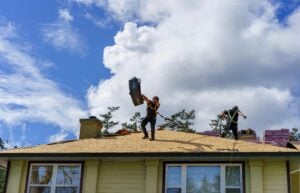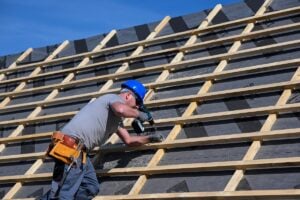Replacing your roof is one of the most significant investments you’ll make as a homeowner. Over time, even the best roofs reach the end of their lifespan, and repairs may no longer be enough to keep your home safe and efficient. Knowing the average cost to tear off and replace roof in 2025 can help you budget properly, avoid surprises, and make confident decisions when the time comes. This type of project isn’t just about new shingles—it involves tearing off old materials, inspecting the structure, and ensuring your new roof is built to last. By working with trusted roofing specialists, homeowners can navigate this process smoothly and maximize their investment.
Here’s what you’ll learn in this guide:
- Why understanding roof replacement costs matters for homeowners
- Key factors that influence the price of a full tear-off and replacement
- Average 2025 cost ranges broken down in detail
- Helpful checklists, FAQs, and comparisons to guide your decision
- Tips to manage expenses and extend the life of your new roof
🏡 Why Roof Replacement Costs Matter in 2025
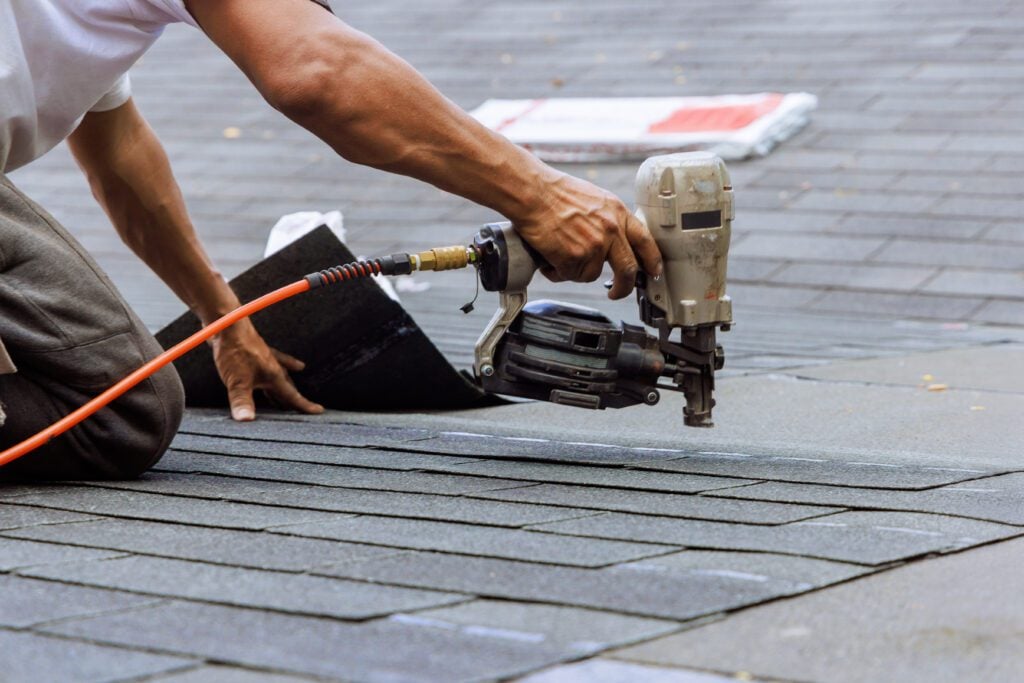
When you’re facing a full roof replacement, knowing the cost drivers isn’t just helpful—it’s essential. Roofing isn’t a cosmetic project; it directly impacts your home’s safety, comfort, and long-term value.
- Protects Your Home: A quality replacement keeps out water, prevents structural damage, and maintains indoor comfort.
- Supports Smart Budgeting: Understanding cost ranges helps you plan ahead and avoid last-minute financial stress.
- Prevents Overpaying: Homeowners who know average pricing can spot inflated bids and negotiate with confidence.
- Increases Resale Value: A new roof is a top selling point, often recouping much of the investment when selling your home.
- Ensures Long-Term Savings: While the upfront cost may feel high, proper replacement reduces repair frequency and energy waste.
💵 5 Key Factors That Influence the Average Cost to Tear Off and Replace a Roof
No two homes are alike, and several variables affect what you’ll pay for a roof replacement. Here are the main cost drivers every homeowner should know in 2025.
1. Roof Size and Pitch
The larger your roof, the more materials and labor are needed. Roof pitch (steepness) also plays a role.
- Larger roofs increase both material and disposal costs.
- Steep roofs require additional safety equipment and more labor.
- Complex shapes with dormers or valleys take longer to complete.
2. Tear-Off Requirements
Removing the old roof is labor-intensive but necessary for most homes.
- If you have multiple layers of shingles, costs increase.
- Disposal fees vary by region and type of material.
- Hidden structural issues (like rotten decking) may be revealed during tear-off.
3. Material Choice
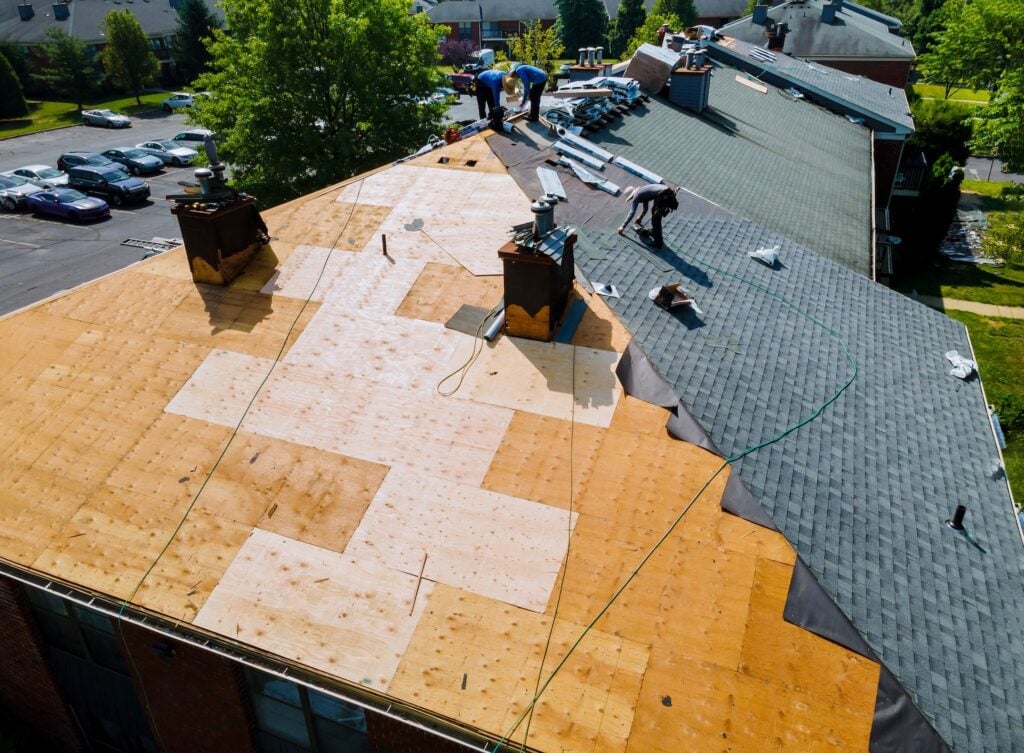
Roofing materials come in a wide price range, and your choice greatly impacts the total.
- Asphalt shingles: Most common and affordable, $5–$8 per sq. ft. installed.
- Metal roofing: Durable and energy-efficient, $10–$16 per sq. ft. installed.
- Tile roofing: Long-lasting and stylish, $14–$20+ per sq. ft. installed.
- Wood shakes: Rustic appeal, $9–$14 per sq. ft. installed.
- Slate roofing: Premium option, $20–$30+ per sq. ft. installed.
4. Labor and Regional Differences
Roofing is labor-intensive, and rates vary depending on location and demand.
- Higher labor costs in urban areas due to overhead and insurance.
- Rural areas may be less expensive but offer fewer contractors.
- In 2025, roofing labor shortages continue to push costs upward.
5. Additional Features and Upgrades
Extra components beyond shingles affect pricing.
- Replacing flashing, gutters, or skylights increases cost.
- Adding insulation or ventilation boosts efficiency but raises totals.
- Extended warranties on materials or workmanship add upfront expense but reduce long-term risk.
📊 Average Cost Ranges to Tear Off and Replace a Roof in 2025
While every home is different, here’s what most homeowners can expect this year.
- Small Homes (1,000–1,500 sq. ft.): $8,000 – $14,000
- Medium Homes (1,600–2,500 sq. ft.): $12,000 – $22,000
- Large Homes (2,600–4,000+ sq. ft.): $18,000 – $40,000+
Per square foot, the national average in 2025 ranges $7–$14 per sq. ft. for a full tear-off and replacement, depending on materials and complexity. Specialty materials like slate or clay tile can far exceed this range.
📋 Homeowner Checklist for Roof Replacement Planning
Replacing a roof can feel overwhelming, but preparation makes it manageable. Here’s a practical checklist:
- Get Multiple Quotes: Compare at least 3 contractors for pricing and scope of work.
- Check Licenses and Insurance: Verify credentials to protect your home and finances.
- Ask About Warranties: Ensure you understand both product and labor guarantees.
- Plan for Disposal: Confirm who handles old material removal and landfill fees.
- Budget for Extras: Set aside 10–15% for surprises like damaged decking.
- Schedule Strategically: Aim for spring or fall when weather is mild and crews are available.
🔍 FAQs About Roof Replacement Costs
- Can I just install new shingles over the old ones? In some cases, yes, but codes often limit roof layers. Tear-off ensures better results and longer life.
- Will my homeowner’s insurance cover replacement? Only if damage is caused by storms or accidents, not normal wear and tear.
- How long will the new roof last? Asphalt shingles last 20–30 years, metal 40–70, tile and slate 50–100+.
- How long does replacement take? Most residential projects take 1–5 days depending on size and weather.
- Does a new roof increase resale value? Yes—a new roof is a strong selling point that often recoups 60–70% of the cost.
🛠️ Cost-Saving Tips and Value Considerations
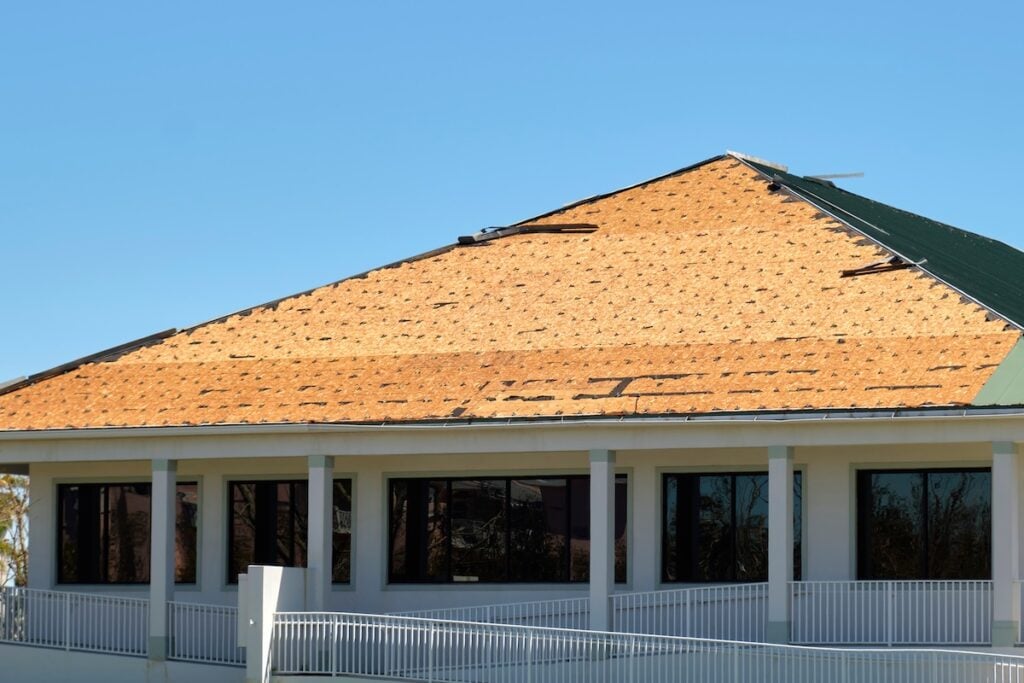
While a roof replacement is a major expense, there are ways to save money without cutting corners.
Smart Maintenance to Delay Replacement
- Clean gutters regularly to prevent water backup.
- Inspect for damaged shingles after storms.
- Trim overhanging branches to reduce debris.
- Schedule professional inspections every 1–2 years.
Strategies to Manage Costs
- Choose mid-range materials that balance affordability and longevity.
- Bundle roof work with gutter or insulation upgrades for efficiency.
- Ask contractors about seasonal discounts or financing options.
- Consider energy-efficient roofing materials that may qualify for rebates.
Pros vs. Cons of Popular Materials
| Material | Pros | Cons |
| Asphalt Shingles | Affordable, widely available, variety of styles | Shorter lifespan, less eco-friendly |
| Metal | Long-lasting, energy-efficient, low maintenance | Higher upfront cost, can be noisy without insulation |
| Tile | Attractive, fire-resistant, very durable | Heavy, requires reinforced structure |
| Wood Shakes | Natural look, good insulation | Fire risk, requires more maintenance |
| Slate | Extremely durable, premium appearance | Very heavy, most expensive option |
✅ Making the Right Decision for Your Home in 2025
The average cost to tear off and replace roof in 2025 may feel daunting, but it’s an investment in your home’s safety, comfort, and long-term value. By understanding cost factors, material options, and budgeting strategies, you can approach this project with clarity and confidence. A well-installed roof not only shields your home from the elements but also improves energy efficiency and increases resale value. If your roof is reaching the end of its lifespan, don’t wait until leaks cause costly damage—contact us today to schedule a professional inspection and get a detailed replacement estimate tailored to your home.

